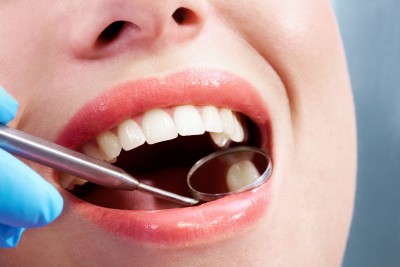 What are Dental Inlays and Onlays?
What are Dental Inlays and Onlays?
Dental inlay and onlay are considered a part of restorative or cosmetic dentistry. Either can be used when the goal is to keep as much of your tooth’s natural structure as possible. They are a great solution when repairing chip or cracked teeth when a dental filling just won’t do. So, what is the difference between and onlay and an inlay?
An inlay is a tooth-shaped piece that is custom-made by your dentist to replace a portion of your tooth’s surface that may be missing. The inlay is glued to the surface of the tooth. Depending on the material used for the inlay it’s possible for it to last 30 years or more and on average, you can expect them to last 15 years. Why the 15 year span? It really comes down to the material used. Porcelain inlays do provide the longest lifespan and offer a middle point in terms of cost. Gold also has a long lifespan but relative to porcelain, are far more expensive. The other material inlays are made of composite resin. This is a good option if your budget won’t allow for porcelain inlays or gold inlays.
A dental onlay is similar to an inlay but extends over one or more of the cusps (points) of the tooth. You can expect an onlay to last on average 10-15 years. The shorter lifespan compared to an inlay is because they receive a lot more wear and tear since they cover more area of your tooth. Like an inlay, they can be made from gold, composite resin, or porcelain but gold is rare these days due to the larger size needed to cover the tooth. Some dentists do prefer an onlay over a crown (encircles the whole tooth) due to it being a less invasive while still offering a lot of protection.
With good oral hygiene and regular dental care, both inlays and onlays are considered to be one of the most durable dental restorations available.
Dental Procedure for Inlays and Onlays
Generally, an inlay or onlay procedure is completed in within two visits to your dentist. First visit usually consists of preparing the tooth by cleaning it and removing any decay. Your dentist will take an impression of the tooth and will send it out to a lab to have the onlay or inlay molded so it fits perfectly in place. A temporary fill is placed in the gap where the new inlay or only will be positioned once it is returned by the laboratory. On the second visit, your dentist will remove the temporary fill and once again clean the tooth. The dentist will apply dental adhesive on the inlay or onlay and position it into place.
Schedule Your Smiley Brightly Restorative Dentistry Appointment Today
Do you have extensive decay and damage to your teeth? We are currently accepting new dental patients at our Warren, Michigan dental office and would be happy to evaluate your teeth and whether a dental inlay or dental only would be an option for you to consider. If you are interested in learning more about our dental practice and how we can restore your smile, give us a call at 586-573-7700.
